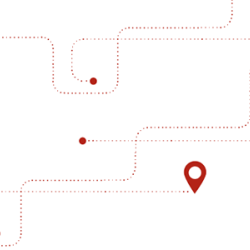The Paths to Access: Courts Must Look Within and Beyond Justice System
 This fall, IAALS launched the Paths to Justice Summit Series, a series of virtual convenings and webinars focused on the most pressing issues currently faced by our justice system, including the opportunities and challenges of the pandemic, inequities in access, and deepening concerns regarding public trust and confidence. The first two convenings and webinars focused specifically on the paths of the pandemic in our courts—one on standard/complex cases and one on high-volume cases. In October and November, we focused specifically on the paths to access in the United States, honing in on key findings from our US Justice Needs study—and how to utilize that data to drive action and system improvement.
This fall, IAALS launched the Paths to Justice Summit Series, a series of virtual convenings and webinars focused on the most pressing issues currently faced by our justice system, including the opportunities and challenges of the pandemic, inequities in access, and deepening concerns regarding public trust and confidence. The first two convenings and webinars focused specifically on the paths of the pandemic in our courts—one on standard/complex cases and one on high-volume cases. In October and November, we focused specifically on the paths to access in the United States, honing in on key findings from our US Justice Needs study—and how to utilize that data to drive action and system improvement.
Out of those events, IAALS published an issue paper that highlights the outcomes, “The Justice Crisis in the United States—From Data to System Reform.” Below are a few key takeaways, as well as video of the November 10 webinar.
From Action to Access
As reflected in our US Justice Needs study, access to justice can’t be treated as a one-size-fits-all problem. In order to have the most impact, those working to improve the justice system must tighten and focus their reform efforts, including:
- Paying attention to justice problems are the most burdensome for people, such as domestic violence and abuse, work and employment, and housing;
- Factoring in the legal infrastructure in the area, including laws, rules, and practices; and
- Understanding that the barriers to access are not borne equally across society and are shaped by socio-demographic factors such as income, gender, race and ethnicity, and age—and targeting efforts to address this disparity.
In addition to focusing on reform efforts, it’s imperative to focus on different justice-system actors in order to achieve momentum with any particular group. Court administrators, judges, and lawyers interact with the system in different ways, with unique perspectives and ideas on ways it could improve. By engaging these actors in thoughtful, tailored ways, it’s possible to gain traction within the system as a whole.
And, the system must be proactive and identify interventions before problems occur. When we consider the full extent of the justice crisis, we see that approximately 120 million legal problems are not resolved fairly each year from the perspective of the users of our system. The cumulative impact of the crisis is immense. People can suffer from multiple adverse effects, including financial instability, emotional issues, and diminished mental well-being. However, if we can identify specific interventions that avoid problems altogether, we can eliminate these negative impacts—on people’s lives as well as the system.
Another critical opportunity for intervention is to consider how various providers of justice, including financial institutions, healthcare professionals, insurance companies, and public authorities, can work together. We must figure out how to integrate the expertise of those outside the legal system to address structural issues.
Expanding Engagement and Support
In order to broaden interest, engagement, and support around civil justice system reform, we have to look to other complex movements (such as the criminal-justice reform movement and the environmental movement), examine their successes and failures, and identify effective tactics. In addition, educating both those within and outside the justice system is crucial. The key to wider engagement is a deeper understanding—of the extent of the crisis, the necessary solutions, and the vision of a better system—and this understanding must include all the justice system actors needed for reform. Providing a full view of how justice is delivered, as well as the journeys people take to resolve their legal problems, is essential in the effort to design better and more responsive justice systems.
And, like any reform movement, messaging is key. Highlighting goals as part of this messaging, as well as utilizing storytelling and narrative, will be critical in recruiting others to share in and work toward the vision of a justice system that works for all people.
Need for Continued Dialogue, Research, and Education
The US Justice Needs study confirms there is much work to be done to ensure the American legal system meets its promise of equal justice for all. Our ultimate goal is the fair resolution of justice problems—which doesn’t always mean going to court. Instead, it means people feel empowered with the resources and knowledge to resolve their legal issues, whether that’s via a courtroom or less traditional methods.
The unmet need for justice in the United States remains a critical challenge in our society—and therefore, cross-system engagement and collaboration are essential. We cannot do this alone. Instead, we must look to actors both within and outside the legal system in order to address this challenge and ensure that the needs of all are met in an equal, equitable, and fair way.
Moving to Action on the Path to Racial Justice
The discussions around action and reform have highlighted the many ways in which our system is constructed to create injustices and inequities. In the final theme of this summit series, we will focus on barriers to equity in our justice system, where we see effective strategies to address these barriers, and the important role of public trust and confidence.
Please join us for the final Paths to Justice session on January 26, 2022, which will explore the intersection of racial justice and public trust and confidence.





